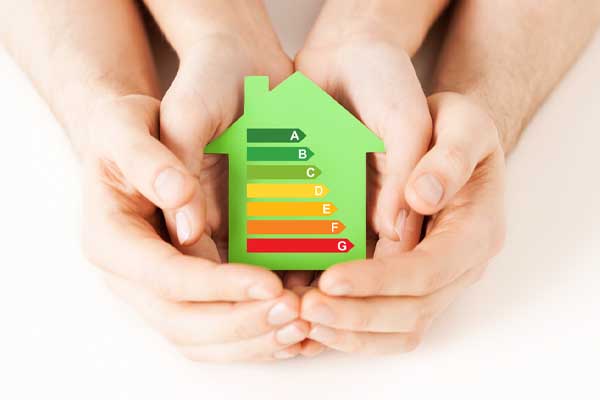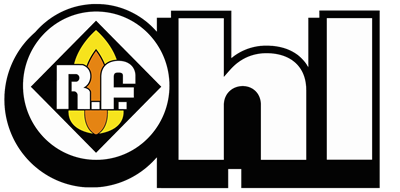What Does AFUE Rating Really Mean?

Energy Star states that your home’s cooling and heating system takes up almost half of your total energy expenses. You can cut your energy costs when you make smart decisions about your system’s tune-up, repair, and replacement. If you are due for new heating equipment, you should be very familiar with AFUE because it has a direct impact on your energy consumption and bills. This article has all you need to know about the AFUE rating.
The Definition Of AFUE Rating
Contents
The Annual Fuel Utilization Efficiency, shortened to AFUE, was created by the American Society of Heating, Refrigerating, and Air Conditioning Engineers (ASHRAE). It is represented as a percentage and used to measure the energy efficiency of a heating system. Generally, AFUE is defined as the ratio of the heat generated versus the total amount of fuel the heating unit consumes.
You can calculate the AFUE rating of your heater by dividing the amount of fuel the unit uses by the amount of heat produced, typically in British thermal units (BTU). For instance, if your system has an 85% AFUE value, the unit uses 85% of the fuel for heating while the remainder 15% is lost from inefficient chimneys, burners, and other areas. It should be noted that the AFUE doesn’t account for the heat lost via the pipes and ducts. A significant amount of heat could be lost through the ductwork and pipes. The US Department of Energy (DOE) states that the ducts in unconditioned areas like the attics and garages can lose up to 35% of the energy output of your furnace.
High AFUE ratings usually equal higher energy efficiency and vice versa. Therefore, high AFUE values mean you will have reduced fuel bills. Keep in mind that electric heat pumps use Heating Seasonal Performance Factor (HSPF) instead of AFUE in heating mode. AFUE is currently used by the US DOE to be the national measurement standard denoting the heating system’s combustion efficiency.
Per the DOE, gas heating systems should have a minimum AFUE rating of 80% for the Southwest and 90% for the Northern region. This was made to promote energy efficiency across the United States. As a result, nearly all new furnace models today have 90% or higher AFUE ratings.
Related Article: Reasons To Avoid Closing Your Registers For Temperature Control
How To Find The AFUE Rating
The Federal Trade Commission requires manufacturers of furnaces and boilers to provide AFUE ratings for their products. This is to assist consumers in making smart purchase decisions. Most manufacturers place this information on the EnergyGuide label or the yellow tag on most electrical appliances. If there is no rating on the EnergyGuide label or the label is nowhere to be found, check the owner’s manual. You can also look it up on the manufacturer’s or retailer’s website. Take note that a decrease in energy efficiency typically happens with your system as time passes. This means that the printed AFUE rating on your system is likely higher than the system’s actual rating. Therefore, you should contact an HVAC professional to help you measure and determine the actual AFUE rating of your system.
What Is A Good AFUE Rating?

Per the DOE, a good AFUE rating for the Southwest is anything higher than 80%, while the Northwest requires a 90% AFUE rating. Unfortunately, heating systems tend to gradually become less efficient. The AFUE ratings of outdated or underperforming heating systems can be as low as 56% to 70%. According to the standards mandated by the DOE, new systems should have a minimum AFUE rating of 78%. Heating systems can be classified into three based on their AFUE ratings:
- Low-efficiency systems (less than 80%)
- Mid-efficiency systems (80% to 89%)
- High-efficiency systems (90% or higher)
The highest AFUE rating is about 97% to 98.5% due to the inefficiencies linked with heating systems, such as firing and distribution losses.
How Can Homeowners Use AFUE Ratings?
AFUE rating measures how efficiently a furnace works. Furnaces become less efficient over time, so older and non-efficient furnaces are likely to have lower AFUE ratings. The heating systems sold in the United States didn’t need to meet set AFUE ratings before 1975. However, in 1987, the DOE mandated that the AFUE ratings of heating systems should be a minimum of 78%. This was later raised to 80% in 2015. Furnaces that are 15 years or older are typically inefficient, making them expensive to operate. Even a low-efficiency 80% AFUE rating furnace can bring you greater energy savings and reduced energy expenses. To achieve more savings, select a furnace with a higher AFUE value. Currently, the most energy-efficient system on the market has around 98.5% AFUE. Keep in mind that the AFUE rating you select will significantly affect your energy expenses and carbon footprint.
Related Article: Top HVAC Installation Mistakes to Avoid
Should I Buy A High-Efficiency Furnace?
Several factors need to be considered to answer this query. One of these factors is the region you live in. You may live in a particularly cold region that requires you to use your furnace frequently. If so, you should go for a high-efficiency furnace that can provide you with greater energy savings down the line. A high-efficiency furnace can be as much as 18.5% more energy efficient than a low-efficiency one. Figures from different studies show that, on average, households in the US spend about $600 or more on heating each year. Therefore, you can save up to $111/year with a high-efficiency system.
Your budget should also be considered. High-efficiency furnaces have an average price of around a thousand dollars more than mid-efficiency ones. On the other hand, furnaces generally have a service life of 15 to 20 years. If you save $111 for 15 years, your savings will add up to over $1,600. Therefore, you can get back the added cost of system installation over time.
Related Article: Signs Your Furnace Has A Cracked Heat Exchanger
Features of High AFUE Furnaces
In general, furnaces with high AFUE values have new technologies and features so that they can offer unparalleled energy efficiency to your homes. Some of the impressive features these systems have are:
- Variable-speed blowers
- Variable-heat output
- Secondary heat exchanger
- Better air filtration systems
- Direct spark ignition systems
Related Article: What Can I Expect During My HVAC Installation?
Conclusion
AFUE measures a heating system’s energy efficiency. It is utilized by the US Department of Energy to set the standards for furnace efficiency. All furnaces for sale in the United States should have an AFUE of 80% or higher.
Call R.F. Ohl For All Your HVAC Needs

For high-quality HVAC services in the Poconos and the Lehigh Valley, Pennsylvania, make sure to call R.F. Ohl. We only employ the best professionally certified technicians with the knowledge and experience to service your HVAC system accurately. Rest assured, our skilled techs can provide excellent heating and cooling maintenance, replacements, installations, and repairs.
Need highly affordable HVAC service prices in the area? No worries. R.F. Ohl can help you. Our tune-up services can help increase your energy efficiency and enhance home comfort while lowering your heating and cooling bills. We can help you find the most suitable HVAC repair or replacement system for your home while staying within your budget. We guarantee all our work because your satisfaction is important to us. Call R.F. Ohl today to schedule a service appointment and get a free, in-home estimate. Click the link to view our service area.
Click here to contact us today or give us a call at (610) 377-1098 if you have any questions.